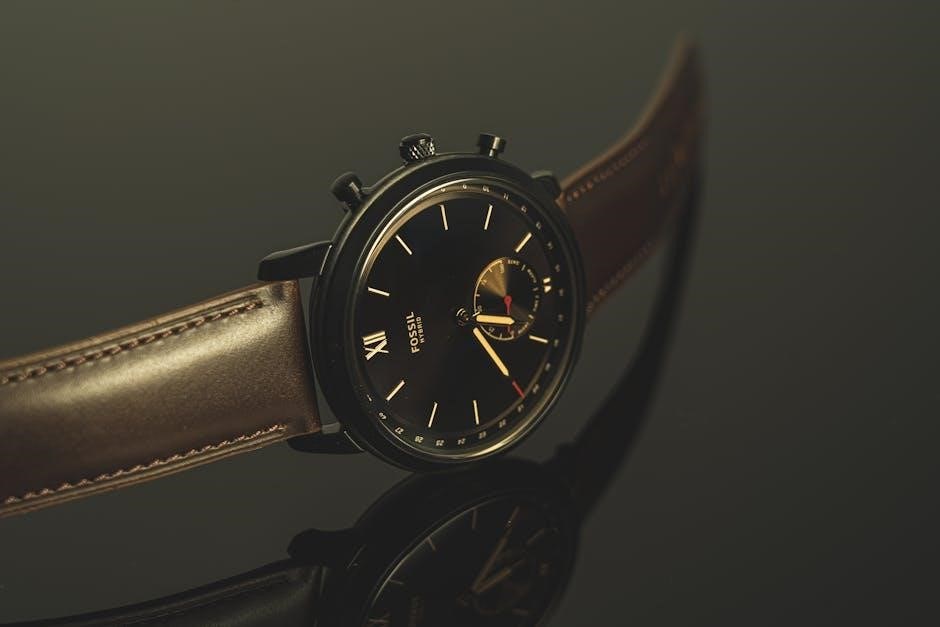
Learn how to properly use and secure DonJoy knee brace straps for optimal support and stability. This guide covers essential steps for fitting‚ adjusting‚ and maintaining your brace effectively.
Overview of DonJoy Knee Braces
DonJoy knee braces are high-quality orthopedic devices designed to provide support‚ stability‚ and pain relief for various knee conditions. They cater to different needs‚ from sports injuries to osteoarthritis management. Popular models include the Armor‚ Defiance‚ Reaction WEB‚ and OA Unloader braces‚ each offering unique features like adjustable straps‚ hinges‚ and anti-migration technology. These braces are engineered to promote healing‚ reduce discomfort‚ and enable active lifestyles. They are often recommended for athletes‚ individuals with knee instability‚ or those recovering from surgery. DonJoy knee braces are known for their durability‚ comfort‚ and customizable fit‚ making them a trusted choice for knee care and protection.
Importance of Proper Strap Use
Proper strap use is crucial for ensuring the effectiveness and comfort of DonJoy knee braces. Securely fastened straps prevent slippage‚ maintain proper alignment‚ and provide consistent support. If straps are too loose‚ the brace may shift‚ reducing its ability to stabilize the knee. Conversely‚ over-tightening can restrict movement and cause discomfort. Correct strap tension ensures optimal performance‚ protecting the knee during activities and aiding in recovery. Proper use also extends the lifespan of the brace‚ preventing wear and tear. By following the manufacturer’s guidelines‚ users can maximize the benefits of their DonJoy knee brace‚ ensuring both safety and efficacy in managing knee-related conditions or injuries.

Types of DonJoy Knee Braces
DonJoy offers various knee braces‚ including Armor‚ Defiance‚ Reaction WEB‚ and OA Unloader‚ each designed for specific needs like stability‚ support‚ and pain relief.
DonJoy Armor Knee Brace
The DonJoy Armor Knee Brace is a high-performance brace designed for individuals requiring robust support and stability‚ particularly for high-impact activities. It features a unique thigh strap in the front‚ which helps prevent migration and ensures a secure fit. The brace is ideal for athletes or individuals with moderate to severe knee instabilities‚ offering bilateral hinges for added stability. The straps are strategically placed to provide optimal compression without restricting movement. A key feature of the Armor Knee Brace is its ease of use‚ with color-coded straps to guide proper tightening. It’s important not to over-tighten the upper straps‚ as this can push the brace down the leg. This brace is a popular choice for those needing durable‚ long-lasting support.
DonJoy Defiance Knee Brace
The DonJoy Defiance Knee Brace is a premium option designed for individuals needing advanced knee support‚ particularly for ACL injuries or ligament instabilities. It features a unique ACL strapping configuration‚ which enhances stability and reduces the risk of further injury. The brace includes multiple straps‚ typically two to four‚ that fasten with Velcro‚ providing a snug and customizable fit. A standout feature is the “Set-and-Forget” technology‚ allowing users to easily secure the brace without constant adjustments. The Defiance model is known for its durability and comfort‚ making it suitable for both athletic activities and daily use. Proper application involves fastening the lower calf straps first to prevent slippage‚ ensuring the hinge stays in place. This brace is highly recommended for those seeking a balance between support and mobility.
DonJoy Reaction WEB Knee Brace
The DonJoy Reaction WEB Knee Brace is designed for individuals experiencing mild to moderate knee pain or ligament instabilities. It features a unique webbing system that provides additional stability without adding bulk. This brace is ideal for active lifestyles‚ offering a lightweight and breathable design that enhances comfort during physical activities. The Reaction WEB Knee Brace includes adjustable straps that ensure a secure fit‚ preventing slippage during movement. Its versatile design makes it suitable for both athletic and everyday use. Proper application involves fastening the lower calf straps first to maintain proper positioning. This brace is a popular choice for those seeking a balance between support‚ flexibility‚ and ease of use.
DonJoy OA Unloader Knee Brace
The DonJoy OA Unloader Knee Brace is specifically designed for individuals with osteoarthritis‚ particularly those experiencing unicompartmental knee pain. This brace uses a unique unloading mechanism to redistribute weight and reduce pressure on the affected knee joint. It is adjustable‚ allowing users to customize the level of support and pain relief. The OA Unloader features breathable materials and a lightweight design‚ making it comfortable for daily wear. Proper application involves securing the lower calf straps first to ensure stability‚ followed by the upper thigh straps for optimal alignment. This brace is ideal for active individuals seeking to manage osteoarthritis symptoms while maintaining mobility and performing everyday activities comfortably.

Basic Fitting and Application
Start by stepping into the brace‚ ensuring the hinges align with your knee. Secure lower calf straps first‚ then upper thigh straps for proper fit and stability.
Preparing the Brace
Before applying your DonJoy knee brace‚ ensure it is clean and free from debris. Inspect all straps and buckles for wear or damage. Lay the brace flat‚ with the hinges aligned vertically and the opening facing upwards. Locate the anti-migration strap and ensure it is properly threaded through the designated loops. If your brace has removable liners or pads‚ check for proper placement. Gently flex the hinges to confirm smooth movement. Avoid over-tightening any straps during preparation‚ as this can restrict proper fitting. Once prepared‚ the brace should be ready for step-by-step application‚ starting with the lower calf straps and moving upward. Proper preparation ensures a secure and comfortable fit.
Step-by-Step Application Process
Start by sitting comfortably with your leg extended. Slide your leg into the brace‚ ensuring the hinges align with your knee joint. Fasten the strap closest to your knee first‚ located just above the calf‚ snugly but not overly tight. Next‚ secure the upper thigh straps‚ pulling them firmly to maintain proper positioning. Adjust the anti-migration strap to prevent slippage. Stand up to check the fit‚ ensuring the brace feels stable and supportive. Make final adjustments as needed‚ ensuring all straps are snug but not restrictive. Proper application ensures optimal support and prevents discomfort during use. Follow these steps consistently for the best results.
Adjusting the Brace for Comfort
After applying the brace‚ ensure all straps are snug but not overly tight. Begin by loosening all straps slightly‚ then tighten them incrementally‚ starting with the lower calf straps to secure the brace in place. Avoid overtightening the upper thigh straps‚ as this may cause discomfort or push the brace downward. Adjust the anti-migration strap to prevent slippage without restricting movement. Stand and bend your knee to ensure the brace feels stable and comfortable. If needed‚ make fine adjustments to the straps for optimal fit. Proper adjustment ensures even pressure distribution and prevents discomfort during use. Always prioritize comfort while maintaining support to maximize mobility and effectiveness.

Securing the Straps
Secure the lower calf straps first‚ then the upper thigh straps‚ ensuring snugness without discomfort. Tighten the anti-migration strap to prevent slippage‚ maintaining proper alignment for stability.
Lower Calf Straps
The lower calf straps are crucial for securing the brace in place. Begin by fastening the strap closest to your knee‚ typically located just above your calf. Ensure it is snug but not overly tight to avoid discomfort. These straps prevent the brace from slipping down your leg during movement. For optimal fit‚ stand upright and adjust the straps gently‚ making sure they sit comfortably on your calf. Avoid overtightening‚ as this can restrict circulation or cause pressure points. Properly secured lower calf straps ensure the brace remains stable‚ providing consistent support and alignment throughout the day. Regularly check and adjust these straps to maintain a secure fit.
Upper Thigh Straps
The upper thigh straps play a vital role in stabilizing the brace and preventing migration up the leg. When securing these straps‚ start by fastening them snugly but not overly tight‚ as this can cause discomfort or restrict movement. Properly adjusted thigh straps should provide a firm grip without cutting into the skin. For optimal fit‚ fasten the straps while standing to ensure the brace sits correctly on your leg. Avoid over-tightening‚ as this may push the brace down‚ reducing its effectiveness. Regularly check and adjust the thigh straps throughout the day to maintain a secure and comfortable fit. Properly secured upper thigh straps ensure the brace remains in place‚ providing consistent support and stability during activity.
Anti-Migration Strap
The anti-migration strap is a critical component designed to prevent the brace from slipping down the leg during activity. To ensure proper use‚ fasten this strap while standing to achieve the best fit. It should be snug but not overly tight‚ as excessive tension can cause discomfort or restrict movement. The anti-migration strap works in conjunction with the upper thigh and lower calf straps to maintain brace stability. Regularly check the strap throughout the day to ensure it remains secure‚ especially during dynamic movements. If the strap becomes loose‚ tighten it gently to restore proper positioning. Proper use of the anti-migration strap ensures consistent brace performance and optimal knee support during daily activities or sports. This feature enhances overall brace functionality and user confidence.

Maintenance and Care
Clean the brace and straps regularly using a damp cloth and mild detergent. Rinse thoroughly and air dry to prevent moisture buildup. Avoid harsh chemicals or machine drying to maintain durability and hygiene.
Cleaning the Straps and Brace
To maintain your DonJoy knee brace and straps‚ use a damp cloth with mild detergent to gently clean the surfaces. Avoid harsh chemicals or abrasive materials that could damage the fabric or components. For more thorough cleaning‚ hand wash the liners and straps separately in cold water. Rinse thoroughly to remove all soap residue. Allow the brace and straps to air dry completely‚ avoiding direct sunlight or heat sources‚ which could cause warping or discoloration. Regular cleaning prevents moisture buildup and ensures optimal performance. Always refer to the manufacturer’s guidelines for specific care instructions tailored to your brace model. Proper maintenance extends the lifespan of your brace and keeps it hygienic for daily use.
Drying and Storing the Brace
After cleaning‚ allow your DonJoy knee brace to air dry completely. Avoid using heat sources like dryers or radiators‚ as they may damage the materials. Once dry‚ store the brace in a cool‚ dry place away from direct sunlight to prevent fading or warping. Ensure all straps are secured to maintain their shape and prevent tangling. If storing for an extended period‚ consider placing the brace in its original packaging or a protective case to avoid dust accumulation. Proper drying and storage preserve the brace’s integrity‚ ensuring it remains functional and comfortable for future use. Always follow these steps to maintain your brace’s performance and longevity.

Troubleshooting Common Issues
Address common issues like slippage or tightness by checking strap alignment and tightness. Clean straps regularly to maintain grip. Replace worn-out parts promptly for optimal performance.
Strap Replacement and Repair
If your DonJoy knee brace straps show signs of wear or lose effectiveness‚ replacement is necessary. To replace straps‚ carefully cut the old ones near the slider using scissors. Remove the slider and insert the new strap‚ ensuring it is securely fastened. Tighten evenly to avoid imbalance. For minor repairs‚ clean the straps with a mild detergent and allow them to air dry. Regularly inspect straps for damage or fraying. Replace any worn-out parts promptly to maintain brace stability. Proper strap maintenance ensures optimal performance and longevity of your DonJoy knee brace. Always follow the manufacturer’s guidelines for replacement and repair to guarantee safety and effectiveness.
Resolving Slippage or Tightness
To address slippage or tightness with your DonJoy knee brace‚ start by ensuring proper strap tension. Begin with the lower calf straps‚ securing them snugly to prevent the brace from shifting. Avoid overtightening the upper thigh straps‚ as this may cause discomfort or push the brace downward. If slippage occurs‚ reposition the brace and tighten the lower straps while standing for optimal fit. If tightness persists‚ loosen the upper straps slightly and readjust. Regularly check and adjust straps throughout the day for consistent support; Proper strap alignment and tension are key to avoiding discomfort and ensuring the brace functions effectively. Always follow the manufacturer’s guidelines for adjustments to maintain optimal performance and comfort.

Advanced Features and Configurations
Discover advanced features like the 4 Points of Leverage system and ACL strapping configurations‚ designed to enhance stability and support for optimal knee protection and performance.
4 Points of Leverage System

The 4 Points of Leverage system in DonJoy knee braces is designed to provide exceptional stability and support. This advanced configuration uses four strategically placed points to apply pressure and leverage‚ helping to stabilize the knee joint effectively. It is particularly beneficial for individuals with ACL injuries or those requiring ligament support. The system works by distributing force evenly around the knee‚ minimizing movement and preventing excessive strain. This technology enhances the brace’s ability to protect the knee during physical activity while allowing for a natural range of motion. By optimizing leverage‚ it ensures a secure fit and reduces the risk of slippage‚ making it ideal for active individuals seeking high-performance support.
ACL Strapping Configuration
The ACL Strapping Configuration in DonJoy knee braces is tailored for individuals with ACL injuries or surgeries. This setup focuses on enhancing stability and reducing strain on the ACL. The straps are positioned to mimic the ligament’s natural tension‚ providing critical support during recovery or high-impact activities. The configuration ensures the brace applies targeted pressure to prevent excessive anterior tibial translation‚ a common issue post-ACL injuries. By securing the brace with this specific strapping method‚ users can enjoy improved confidence and stability. Proper application ensures optimal performance‚ making it essential to follow the manufacturer’s guidelines for the ACL configuration. This feature is particularly recommended for athletes or individuals requiring advanced knee support.
Proper use and maintenance of DonJoy knee brace straps ensure optimal support and stability‚ enhancing recovery and performance for users with knee injuries or conditions.
- Properly fitting DonJoy knee braces ensures optimal support and stability for knee injuries or conditions.
- Securing straps correctly‚ starting near the knee‚ prevents slippage and maintains proper alignment.
- Regular cleaning and drying of the brace and straps are essential for hygiene and longevity.
- Addressing common issues like slippage or tightness can be resolved by adjusting straps or seeking professional help.
- Advanced features‚ such as the 4 Points of Leverage system‚ enhance stability and customization for specific needs.
- Following the manufacturer’s instructions and maintaining the brace ensures its effectiveness and durability.
Final Tips for Optimal Use
- Always ensure the brace is snug but not overly tight to avoid discomfort or restricted movement.
- Regularly inspect straps and hinges for wear and tear‚ replacing parts as needed.
- Break in the brace gradually‚ especially for new users‚ to adapt to the support.
- Avoid over-tightening straps‚ as this can cause discomfort or misalignment.
- Monitor the fit over time‚ as leg swelling or muscle changes may require adjustments.
- Clean the brace and straps regularly to maintain hygiene and extend lifespan.
- Store the brace in a cool‚ dry place when not in use to prevent degradation.
- Consult a healthcare professional if experiencing persistent discomfort or instability.
Leave a Reply
You must be logged in to post a comment.